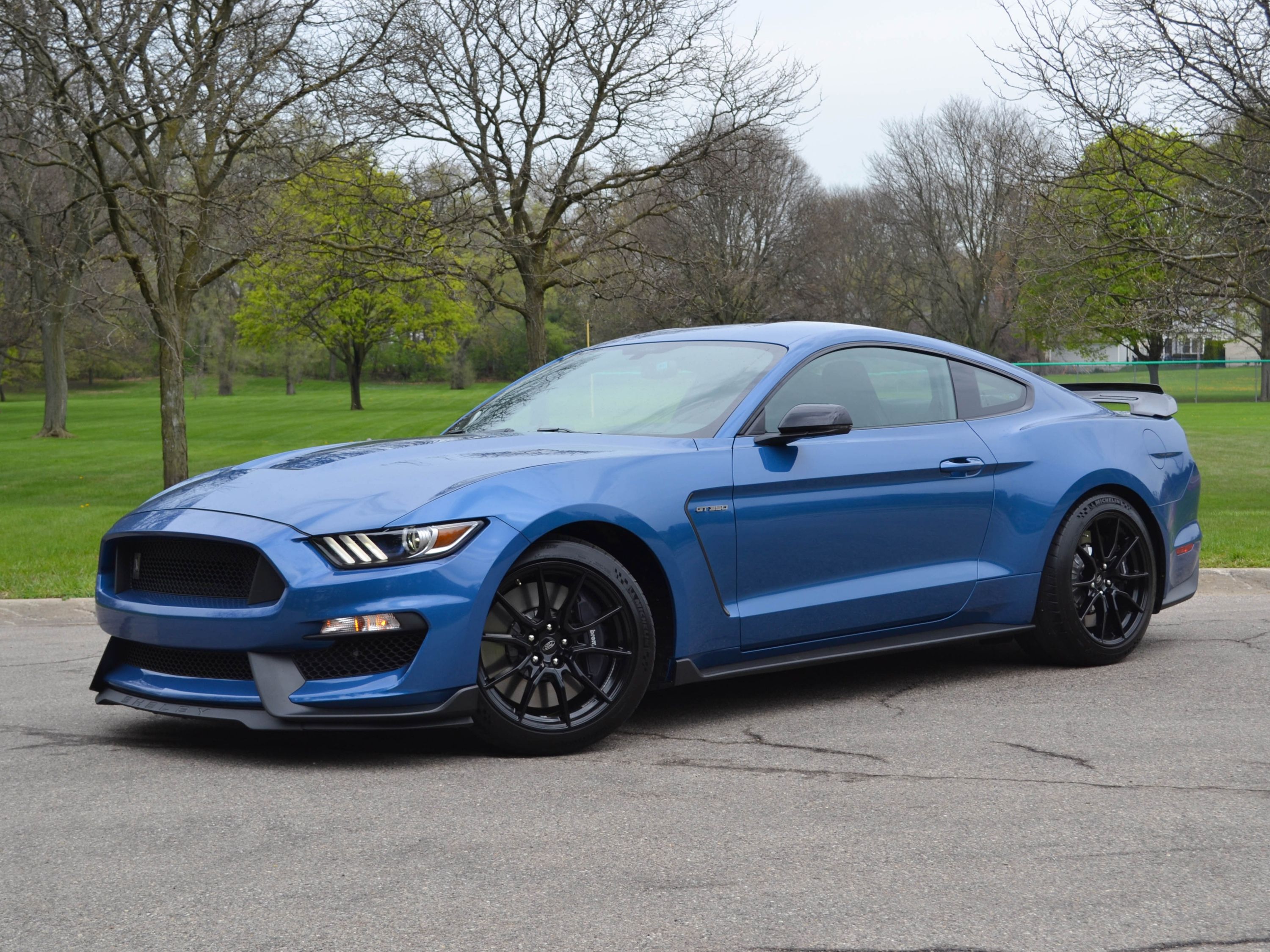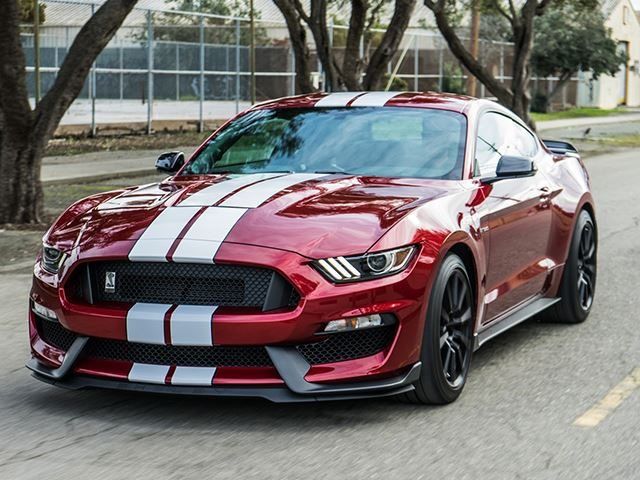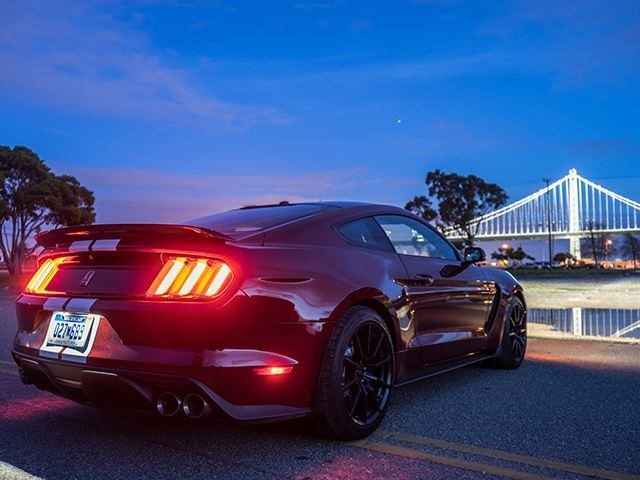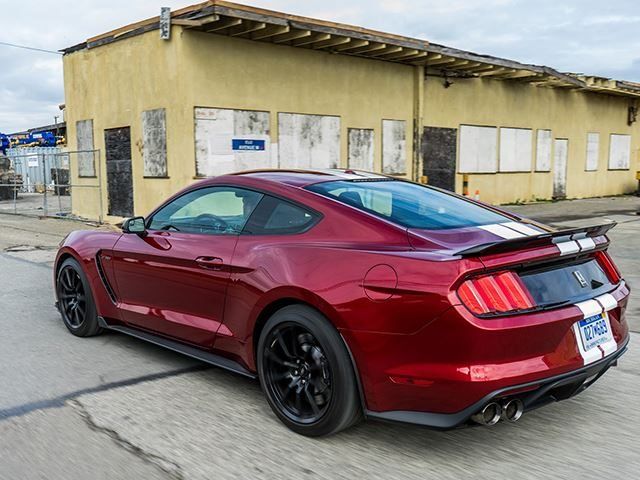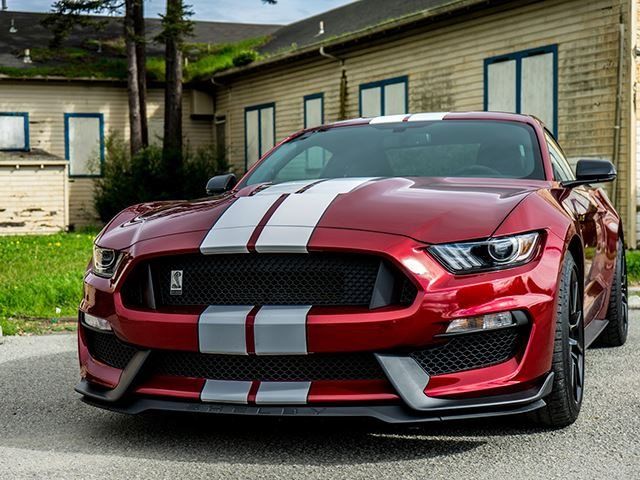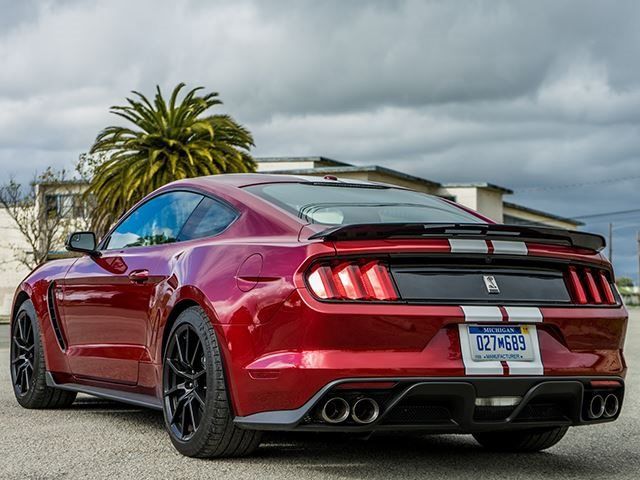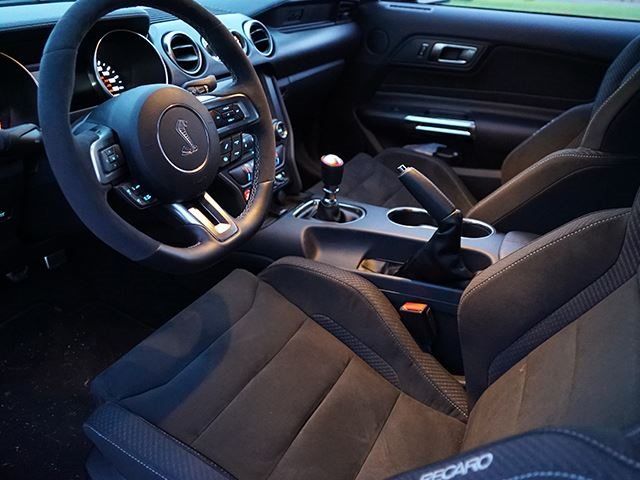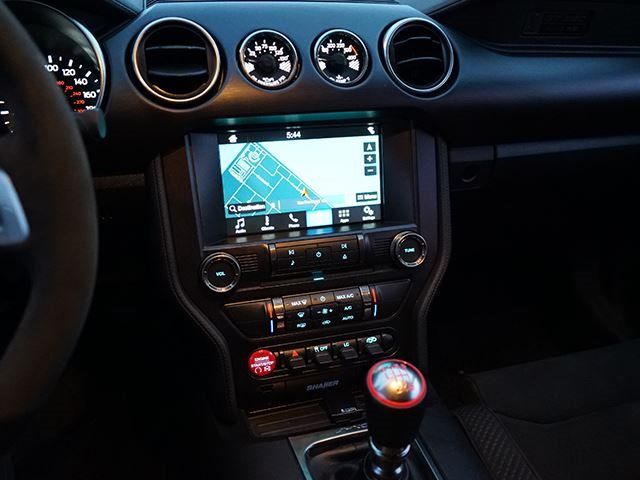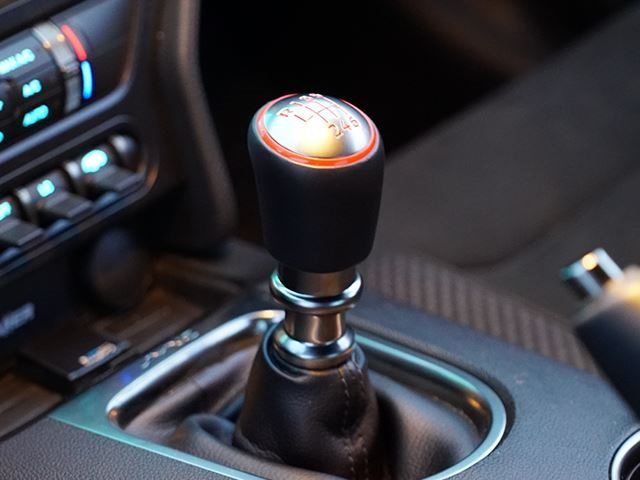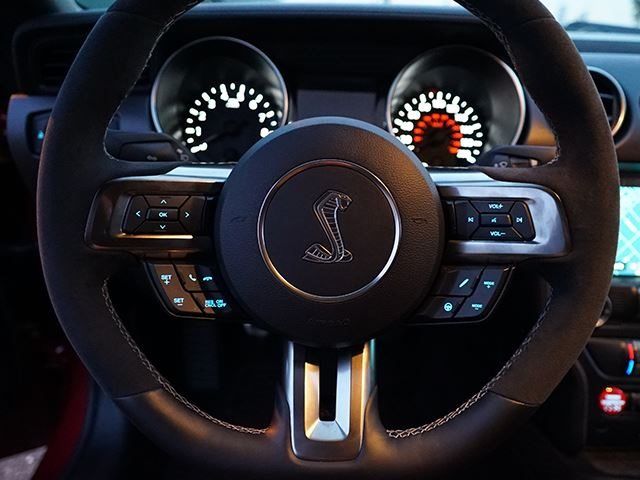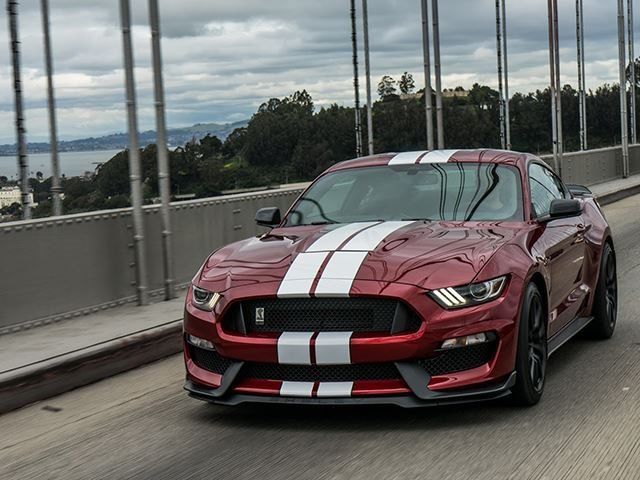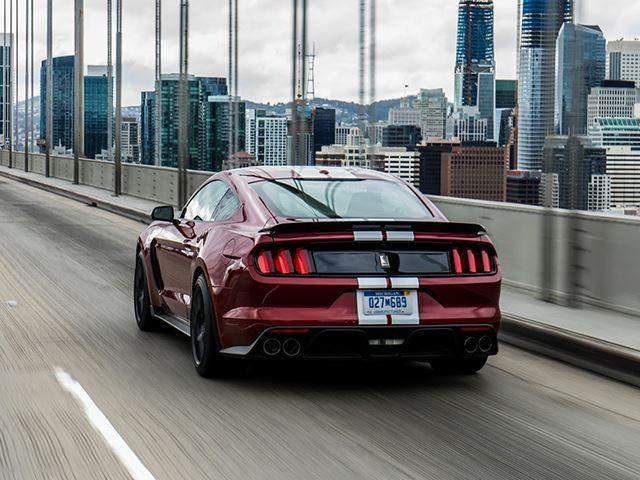2017 Ford Shelby Mustang GT350 Review: We Loved Everything About It
It is with a not so heavy heart that I emerge from the cockpit of a 2017 Ford Mustang GT350 to report to you that even today, in the age of computer-aided drive modes and CPU simulated wind tunnels that chisel a car's body to just the right proportion, real cars, the kind that forge drivers out of unassertive four-way-stop-lingerers, still exist. A Monroney sticker crowded with track-optimized features indicates otherwise, but as anyone who has misconstrued the tone of an email or text message knows, things aren't always as they seem.
The Mustang GT350's ability to remain raw despite beefed up track hardware became apparent to me the instant I pressed the red starter button to wake the 5.2-liter flat-plane crank V8. When the violent but short-lived seismic event was over I realized that my week with the Mustang GT350 would make me a better driver. I'll be the first to admit that my skills have slacked. Each new test vehicle that makes it to my driveway seems to be more loaded than the last. It wasn't long before pre-collision warning systems and beeps from lane keep assist were keeping me from the hands of fate while my attention was diverted to changing stations on the satellite radio or fiddling with settings on the massaging seats.
Inattentive driving habits aren't possible in the Mustang because out of all the parts that make up its $60,365 price, none, save for SYNC, was geared to make the driving experience any easier. Our test model was the standard GT350, not the track-hardened R variant, but all that does is make the Stang a bit more livable in exchange for some go-fast parts. The most obvious upgrades the GT350 gets over it's cross-plane subordinate, the Mustang GT, is the revised flat-plane crank V8, a completely reworked front end featuring a lift-killing hood vent and aluminum construction, a rear spoiler, electric power assisted steering, an engine oil cooler, Ford's Track Apps that include Line Lock and Launch Control, and a transmission oil cooler.
A Magneride damping system complements the revised suspension, TORSEN differential, Brembo brakes, an aluminum tower brace, and sticky Michelin Pilot Super Sport tires to help keep the Mustang on the road, but like a sharp and balanced samurai sword, it still takes the attention, skill, and patience of a pro to attain mastery. Most of the Mustang's upgrades reside under the sheet metal, so to advertise the added grunt like a good muscle car should, Ford reworked the proportions of the front end to make it look more aggressive and then stuck GT350 badges in front of each door to coincide with the Shelby snake badges on the grille and trunk lid.
The only options that added to my tester's $55,195 base price were the $1,300 gas guzzler tax, $395 Ruby Red Metallic paint, which we highly recommend along with the $475 dual white racing stripes. The bulk of the extras budget goes towards the $3,000 electronics package, which adds a nine-speaker audio system, Sirius XM radio, SYNC 3, dual zone climate control, turn signals embedded in the mirrors, voice-activated navigation, and a universal garage door opener. Regardless of the tech, outsiders will look at you like you just parked a space ship in your driveway. Neighbors who have never raised an eyebrow at the array of fast and gorgeous test cars that have flooded my garage suddenly felt the need to start conversations.
Even passing pedestrians asked to hear the engine's roar as if they were pleading to hear the catchphrase of a C-list celebrity they saw walking down the street. Gearheads on the road made themselves apparent by attempting to race me whether in a Mini Cooper S or an Audi S5. I'd blame it all on the racing stripes if I could, but it's more likely that the legend of the flat-plane crank drew them in. The GT350 isn't shy about it either, advertising its power with a menacing rumble coming out of the two-mode four-pipe exhaust. The only two exhaust settings, normal and sport, may as well be labeled "wake the neighbors" or "time to get checked for tinnitus."
I went the latter route, eschewing the polite persona I've spent my New Year's resolution trying to cultivate and exploiting the 8,200-RPM redline under every underpass, tunnel, and bridge. In a sense, the GT350 digs up the douchebag persona of every Mustang driver who's crashed at a Cars and Coffee out from within, even for those people who swear they have no such side. Better then to take the 'Stang to a playground where curbs and potholes don't threaten the low front splitter and away from traffic-packed city streets that wear out even the most fervent purist's affinity to a manual transmission. Ever since the fateful 2014 LA Auto Show where the GT350 was released, we kept hearing about how this was a Mustang built for the track.
Without the required blessing from Ford needed to actually take the GT350 to the track, I settled for our local winding mountain road where I quickly had to adapt my driving style to milk the most out of the Mustang. I set the five-mode traction control (which includes Normal, Sport, Weather, Track, and Drag modes) to Sport, which, unlike Track, leaves the traction control on. Even then I had the naturally aspirated 5.2-liter V8 to wrap my head around. For a white-knuckle slalom through a curvy mountain road, it's completely plausible to leave the six-speed manual in third and call it good. From 3,500 RPM and on, the engine is delivering anywhere between 90-100 percent of the maximum torque thanks to a relatively flat torque curve.
Horsepower, on the other hand, is a linearly delivered treat, enabling immense joy to be derived from taking a corner and exiting with the throttle pinned. Your ears will tell you to shift at around 6,000 RPM when the roar becomes deafening, but push through that sentiment and there's even more power to be had. By the time you're approaching the 8,200-RPM redline, the next corner is approaching fast and the speedometer is already reading triple digits. Put simply, this engine loves to rev and openly encourages it. Ford even adds a shift light heads-up display that helps train you to ignore your ears and shift when approaching the stratospheric redline.
I would have continued driving in third like that it if weren't for the rewarding pops and burbles that the tailpipe emits when successfully pulling off a heel-toe downshift. In the hands of an amateur, enduring the humiliation of botched downshifts to reap the rewards of an exhaust note and a clean corner is necessary, but healthy respect is a must with the GT350 as one CarBuzz editor learned when they nearly sent the Mustang off the road during a high speed corner. While lateral grip is aplenty, the Mustang does not advertise that it's nearing its limits like, say, the Alfa Romeo Giulia QV. As a result, a hard corner will see the tires bite hard, relaying G force by pushing the bolstered Recaro seats into a driver's organs.
Allocate all 526 horsepower and 429 lb-ft of torque to the wheels a bit too early upon corner exit and the GT350 will swing wide, although quick steering input and the responsive front end saved us from making the ultimate sacrifice. Better to learn the lesson and take advantage of the hard-biting brakes, which take some getting used to on city streets but work wonders at high speeds. And just like the G-force meter on Ford's Track Apps, driver emotions while at speed reside in the extremes and range from absolute ecstasy to complete horror with little in between. At cruising velocity, it's not hard to coax a relaxing drive out of the GT350, but that's around the time you begin to notice that the interior isn't anything special.
Fit and finish leaves a bit to be desired although it reminds all who sit inside that this is still a muscle car that happens to be great on the track, not some luxury sports Porsche with an inflated sticker price. But just like nobody goes to a strip club to pay attention to tacky lights and daddy issues, you don't buy the GT350 to own a comfortable grand tourer. You buy it because it is by far the best sports car in its price range, punches far outside its weight class, garners all the attention and respect of drivers on the road, sends driver emotions to the extremes, and best of all, it fakes skill for no one. By the end of my week with the GT350, I came away a new man having taken advantage of the opportunity to learn.
The only thing that made giving it back any easier were the buckets of rain coming down on the road making driving the GT350 akin to holding a newborn baby while playing ice hockey. Photos by Anthony Ruggiero.

